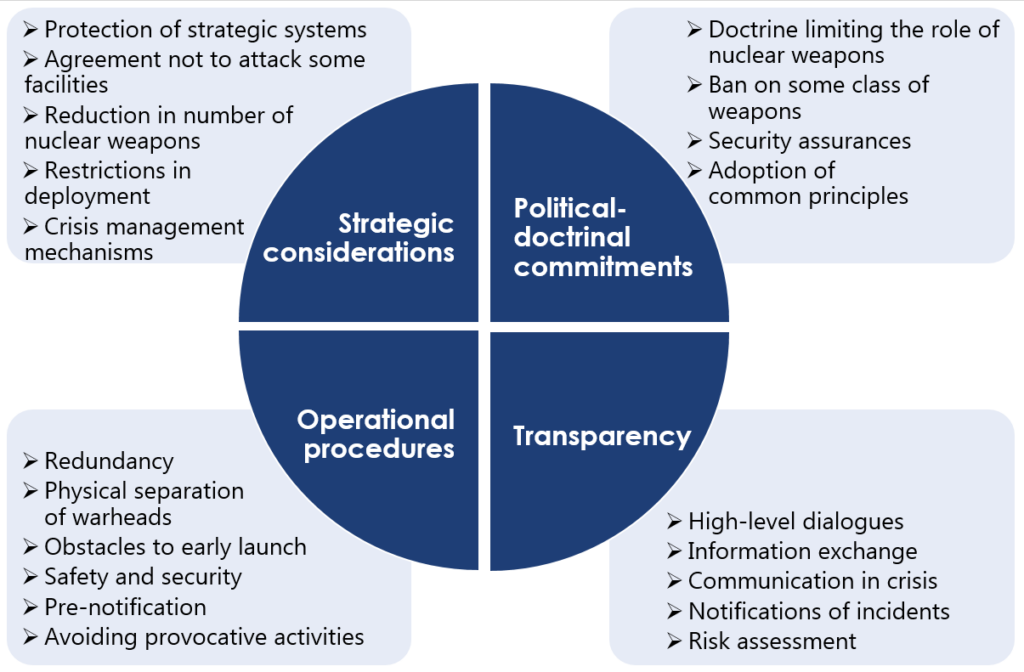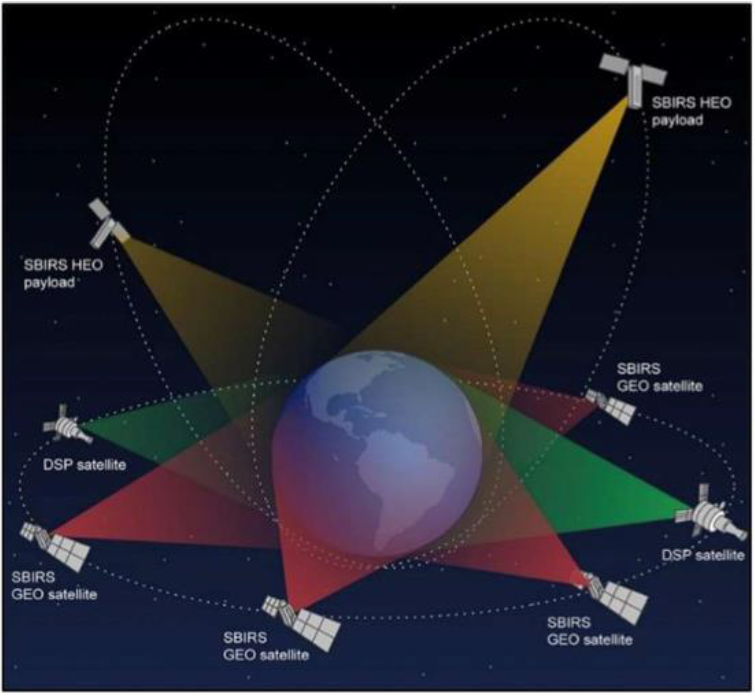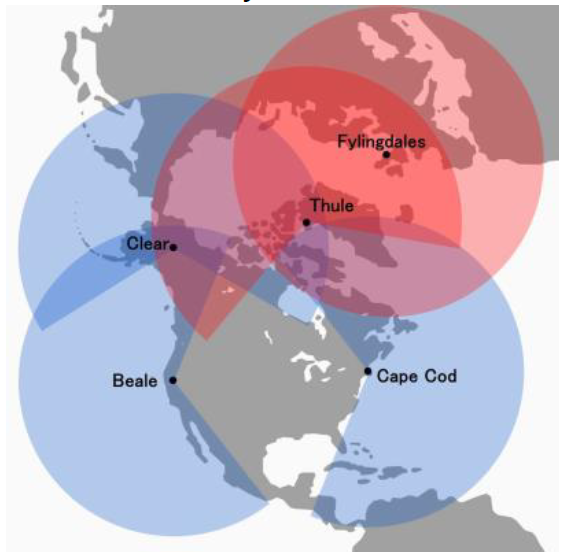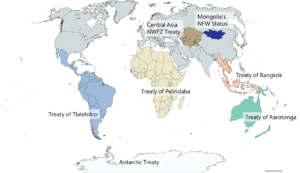The HCoC and Strategic Risk Reduction
HCoC Issue Brief – May 2023
Reducing strategic risks: a pragmatic and necessary approach
In non-proliferation and disarmament forums, the reduction of strategic risks has received considerable attention in recent years. Indeed, while current geopolitical conflicts may be perceived as blocking points in progressing on disarmament, they call for increased efforts to ensure that nuclear weapons are never used. No agreed definition of strategic risks reduction exists. Some states focus on the risks related to the possession of nuclear weapons and raise issues such as the alert level, the security of arsenals or the improvement of launch procedures. Others feel that it may be more important to focus on various pathways to nuclear use and to work on measures that may prevent the escalation of tensions between possessors of nuclear weapons. In both cases, providing transparency on doctrines and forces is generally seen as a positive element.1 Some ballistic missiles are strategic weapons that can carry the threat posed by nuclear warheads to thousands of kilometres in a few minutes. Providing transparency on these systems may therefore limit instability.

In brief
In a context of strong geopolitical tensions, confidence-building measures (CBM) are of particular importance in order to limit the risks of escalation. The Hague Code of Conduct (HCoC), is a case in point, providing greater transparency on ballistic missiles.
As a multilateral instrument, the HCoC holds a particular place in a global architecture of measures that attempts to reduce the destabilising nature of ballistic missiles. By promoting transparency about policies and launches, it aims to limit the risk of misunderstanding, misinterpretation, and worst-case assessments.
As such, the Code, is a key instrument of strategic risk reduction. This function comes in addition to its obvious purpose of curbing the proliferation of ballistic missiles.
Author: Emmanuelle Maitre
Missile testing: a potential source of misunderstanding and escalation

Transparency on missiles can take different forms. It can involve sharing information on the types of systems deployed, their main characteristics, zones of deployment and concepts of use. It can also focus on missile testing. States deploying space-based sensors and radars, such as the United States (Figure 2) and Russia, can detect missile launches on the launch pad and follow their trajectory until the impact. But it can be difficult to distinguish between a missile fired for testing, a civilian rocket launch or an incoming ballistic missile attack.
Transparency on missiles can take different forms. It can involve sharing information on the types of systems deployed, their main characteristics, zones of deployment and concepts of use. It can also focus on missile testing.
States deploying space-based sensors and radars, such as the United States (Figure 2) and Russia, can detect missile launches on the launch pad and follow their trajectory until the impact. But it can be difficult to distinguish between a missile fired for testing, a civilian rocket launch or an incoming ballistic missile attack
On 25 January 1995, Russian radar operators reportedly detected an incoming rocket heading towards Moscow that they identified as a submarine-launched American ballistic missile. This led to the automatic alert of allRussian forces and the nuclear briefcase of then President Yeltsin was readied for launch. Although it was assessed very quickly that the object was in fact a Norwegian scientific-sounding rocket, the incident showed the risk of escalation that could result from misinterpretation of a launch and hence the necessity to communicate on these activities.

Comparisons of transparency mechanisms related to missile launches
iven the potential risk of misunderstanding linked to missile and space launcher activities, it is no surprise that states have sought to inform each other about them. In 2002, the Hague Code of Conduct was adopted and included, inter alia (see below), a provision that invites its subscribing states to pre-notify any ballistic missile test or space launch.
While the Code’s main objective is to curb the proliferation of ballistic missiles, this multilateral instrument considers in a comprehensive manner how confidence and transparency can reduce the risks posed by deployed nuclear-tipped ballistic missiles. But it is not the only international agreement that has created a notification regime for missile launches. During the Cold war, the United States and the USSR first considered the problem in 1971 through the ‘Accident Measures Agreement’, which required both countries to notify missile tests ‘if such launches will extend beyond its national territory in the direction of the other Party’ (Article 4).
The HCoC: information that may be included in a pre-launch notification
- HCoC number
- General class: such as space-launch vehicle (SLV), intercontinental (ICBM) or submarine-launched ballistic missile (SLBM)
- Launch area
- Planned launch notification window
- Planned direction
- Single or multiple launches
- Additional information
While the Code’s main objective is to curb the proliferation of ballistic missiles, this multilateral instrument considers in a comprehensive manner how confidence and transparency can reduce the risks posed by deployed nuclear-tipped ballistic missiles. But it is not the only international agreement that has created a notification regime for missile launches. During the Cold war, the United States and the USSR first considered the problem in 1971 through the ‘Accident Measures Agreement’, which required both countries to notify missile tests ‘if such launches will extend beyond its national territory in the direction of the other Party’ (Article 4). The following year, the ‘Incidents at Sea’ agreement specified the way notifications should be transferred, especially to airmen and mariners, in order to limit hazards linked to missile tests. The SALT II Treaty, signed in 1979 but never ratified, formalised the obligation to pre-notify agreed to in 1971. In 1988, during the Moscow Summit, a new official bilateral ballistic missile notification agreement was signed, in order to expand the scope of pre-notified launches and in particular to cover SLBMs. It relied on the newly-created Nuclear Risk Reduction Centres (NRRC) to exchange notifications. This system was formalised in the 1991 START Treaty. In 2000, the bilateral agreement was extended.
While at the end of the Cold War states made propositions to give a multilateral scope to these CBMs, leading ultimately to the adoption of the Code,3 other countries adopted comparable bilateral agreements. It was the case of India and Pakistan in 2005,4 with the adoption of an agreement renewed in 2011, and Russia and China, with an agreement signed in 2010 and renewed in 2020.5
Similar to the HCoC, these instruments focus on ballistic missiles but contrary to the Code, they include additional limitations, for example on the range of systems considered and the launch direction (Russia-China) or on the test trajectory and impact zone (India-Pakistan). Space launchers are covered only under the Russia-Chinese agreement.

Ways forward
The fact that major powers have adopted and maintained missile launch pre-notification regimes in different contexts shows the importance that such regimes bear in their eyes as strategic risk reduction measures. However, as the current international environment is characterised by a rise in the number of missile possessors and major technological developments, adjustments may be necessary to make those mechanisms even more effective in the future.
The first question is to assess what needs to be notified. It is usually specified in bilateral agreements, but restrictions mean that many ballistic systems are not covered by the mechanism, even though they may be able to carry nuclear weapons. In the HCoC, the lack of an agreed definition of what has to be pre-notified has led to differentiated practices by subscribing states, some, for instance, choosing to ignore systems with a range inferior to 500 km. A similar divergence is observed in the reporting of sounding rockets. Systematically specifying what is in the scope of these mechanisms and opting for inclusive definitions would be a first step to reflect more accurately the strategic landscape.
Second, all those CBMs have thus far excluded cruise missiles. This may need to be reconsidered as cruise missiles have been used for many years to carry WMDs and many deployed systems now have a dual-capacity, including land-based and sea-based weapons. In 2022, the Indo-Pakistani incident with an erroneous launch of a Brahmos cruise missile across the border showed the risk posed by these systems.6 While it may not make sense to pre-notify all cruise missile launches, some systems might be considered for reporting obligations.7
Finally, another important issue deals with how information about launches is processed and shared. Bilateral agreements are a useful first step, but subscribing to the HCoC is much more effective as notifications are immediately shared with a community of 143 countries. Universalisation of the Code should therefore be encouraged, especially for countries that are active in space launches and missile tests. For these countries, information must be adequately transferred to relevant services, for instance, the equivalents of the Nuclear Risk Reduction Centres that are able to inform about activities at all times. Finally, a main benefit of the HCoC is its comprehensive nature. Alongside pre-launch notifications, the Code requires subscribing states to share annual declarations on their missile policies. It allows them to clarify the types of systems they hold and for what purpose, potentially decreasing the risk of worse-case assessment.
About the Hague Code of Conduct
Adopted in 2002, the Hague Code of Conduct against Ballistic Missile Proliferation (HCoC) is a politically binding instrument aiming to limit the proliferation of weapons of mass destruction (WMD) delivery vehicles. Composed of a set of transparency and confidence-building measures, the HCoC is the only existing multilateral instrument to focus on WMD delivery vehicles. The HCoC has reached 143 subscribing states (May 2023) vs 93 at its inception.
When subscribing to the HCoC, states commit to abide by a set of UN treaties and international conventions on space security; to produce an annual declaration regarding ballistic missile capacities and national policy on non-proliferation and disarmament treaties and instruments; and to deliver pre-launch notifications prior to any missile or space launch. Documents are uploaded onto a dedicated online platform managed by Austria, which acts as the HCoC Immediate Central Contact (Executive Secretariat). Subscription to the HCoC is free of charge.
While subscribing states are asked to exercise ‘maximum restraint’ in the development of ballistic capacities, they are proscribed neither from possessing ballistic missiles nor from pursuing space launch activities. In return, subscribing to the HCoC enables states to gain access to information shared by other subscribing states, and to display their political commitment to non-proliferation and disarmament.
i For a complete categorisation of risk reduction measures, see in particular Wilfred Wan, ‘Nuclear Risk Reduction. A Framework for Analysis,’ UNIDIR, 2019, https://www.unidir.org/sites/default/files/2019-11/nuclear-risk-reduction-a-framework-for-analysis-en-.pdf
ii In this instance, Norway had notified the launch but the Russian Ministry of Foreign Affairs failed to forward the information to the relevant services.
iii Vann H. Van Diepen, ‘Origins and Development of the Hague Code of Conduct,’ HCoC Research Paper n° 11, FRS, September 2022, https://www.nonproliferation.eu/hcoc/origins-and-development-of-the-hague-code-of-conduct/
iv Agreement Between The Republic Of India And The Islamic Republic Of Pakistan On Pre-Notification Of Flight Testing Of Ballistic Missiles, signed in Islamabad, 3 October 2005, https://mea.gov.in/Portal/LegalTreatiesDoc/PA05B0591.pdf
v Agreement between the Government of the Russian Federation and the Government of the People’s Republic of China on notification of launches of ballistic missiles and space launch vehicles, Ministry of Defense of the Russian Federation, 21 October 2010, https://russianforces.org/Russia-China%20Notifications%20soglashenie.pdf (in Russian).
vi Aarish U. Khan, ‘Reassessing the BrahMos Missile That Landed in Pakistan,’ The Diplomat, 29 September 2022, https://thediplomat.com/2022/09/reassessing-the-brahmos-missile-that-landed-in-pakistan/
vii Stéphane Delory, Emmanuelle Maitre and Jean Masson, ‘Opening HCoC to cruise missiles,’ HCoC Research Papers n° 5, FRS, February 2019, https://www.nonproliferation.eu/hcoc/opening-hcoc-to-cruise-missiles-a-proposal-to-overcome-political-hurdles/



